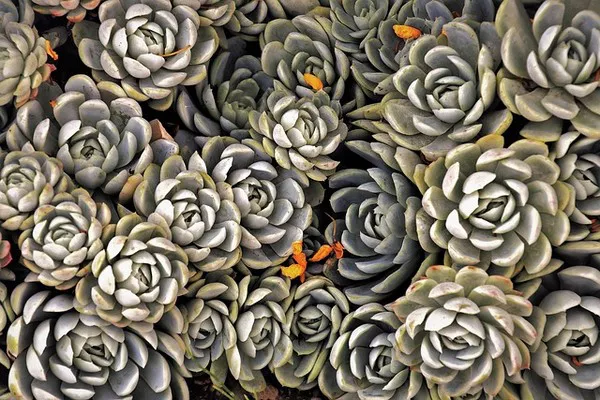Succulents, with their unique and captivating appearance, have gained immense popularity among plant enthusiasts and interior decorators. Known for their resilience and low maintenance requirements, these plants have a reputation for surviving in arid conditions with little care. However, despite their robust nature, knowing how often to water succulents is a crucial aspect of their care. Overwatering or underwatering can lead to various issues, such as root rot and dehydration. In this article, we will explore the art of succulent care and provide guidelines on how often you should water your beloved succulents to ensure their health and longevity.
Understanding Succulents
Before diving into the specifics of watering, it’s essential to understand the unique characteristics of succulents. Succulents are a diverse group of plants that have adapted to thrive in arid and semi-arid environments. They are known for their water-storing abilities, primarily in their fleshy leaves and stems. This feature allows succulents to survive prolonged periods without water.
Succulents come in various shapes, sizes, and colors, making them a versatile choice for indoor and outdoor decoration. Cacti, echeverias, and jade plants are just a few examples of popular succulent varieties. Their ability to thrive in dry conditions and their striking aesthetics have made them a favorite choice for those looking to add a touch of nature to their living spaces.
The Importance of Proper Watering
The secret to successfully caring for succulents lies in understanding that, despite their resilience, they still need water to thrive. Overwatering or underwatering can lead to a host of problems. Overwatered succulents can develop root rot, a condition where the roots become saturated and eventually decay. This can be fatal for the plant. On the other hand, underwatering can lead to dehydration and shriveled, discolored leaves.
To avoid these issues and ensure your succulents remain healthy, it’s crucial to find the right balance in your watering routine. While there is no one-size-fits-all answer, as different succulent species and growing conditions can affect watering needs, there are some general guidelines to follow.
Factors Influencing Watering Frequency
Succulent Species: Different succulent species have varying water requirements. For example, desert cacti are adapted to extremely dry conditions and can go longer without water, while echeverias and haworthias prefer more frequent watering.
Climate and Season: The local climate and the changing seasons play a significant role in determining how often you should water succulents. In hot and dry climates, you may need to water more frequently, while in cooler and more humid conditions, less water may be required.
Pot and Soil Type: The type of pot and soil your succulents are planted in can also affect watering needs. Well-draining soil and pots with drainage holes are crucial to prevent water from pooling at the bottom of the container.
Indoor vs. Outdoor: Succulents grown indoors typically require less frequent watering than those grown outdoors due to differences in humidity and light levels.
Guidelines for Watering Succulents
The Soak and Dry Method: This is a widely recommended approach for watering succulents. Instead of providing small amounts of water frequently, give your succulents a thorough soak when the top inch or two of the soil is completely dry. Use a watering can or a spray bottle to distribute water evenly.
Water the Soil, Not the Leaves: When watering your succulents, aim to wet the soil rather than the leaves. Wet leaves can encourage mold and rot.
Drainage is Key: Ensure that the pots you use have drainage holes at the bottom to allow excess water to escape. This prevents water from pooling at the bottom, which can lead to root rot.
Use Well-Draining Soil: Succulents thrive in well-draining soil, which prevents excess moisture from being trapped around the roots. Commercial succulent and cactus soil mixes are readily available.
Adjust for Seasonal Changes: Be prepared to adjust your watering frequency with the changing seasons. Succulents typically require less water during the winter when they enter a dormant phase.
Observe Your Plants: Pay close attention to your succulents and observe their appearance. Signs that they need water include slightly wrinkled or shriveled leaves. Signs of overwatering include yellowing leaves and soft, mushy stems.
Avoid Watering Schedules: Succulents are not well-suited to fixed watering schedules. Instead, water them as needed based on the condition of the soil and the plants themselves.
In Summary
Succulents are remarkable plants that have captured the hearts of many due to their striking appearance and reputation for being low-maintenance. However, the key to their long-term health and beauty lies in understanding their unique needs, particularly when it comes to watering. Overwatering and underwatering can both be detrimental, so it’s essential to find the right balance based on factors such as species, climate, and pot conditions.
The soak and dry method, well-draining soil, and pots with drainage holes are fundamental elements of a successful succulent care routine. In addition, it’s crucial to remain observant and responsive to the needs of your plants, adjusting your watering frequency as the seasons change.
By following these guidelines and developing a keen understanding of your succulents, you can create a nurturing environment that allows these remarkable plants to thrive. Remember that every succulent is unique, and with time and experience, you’ll become an expert in caring for these captivating botanical treasures.


